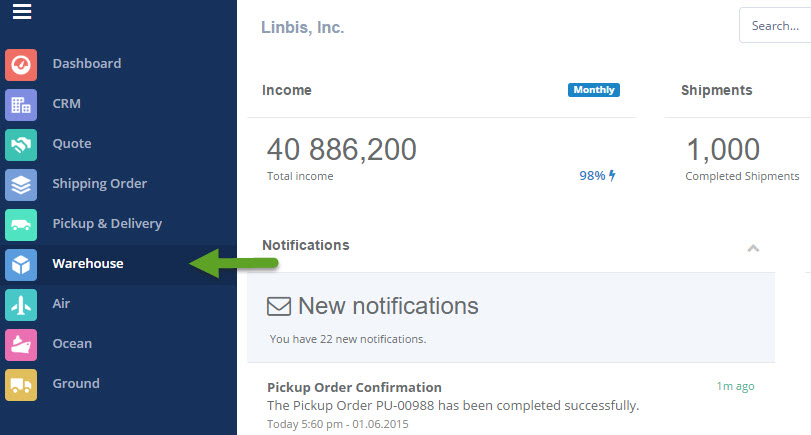SLI Form Guide: A Comprehensive Walkthrough
The Shipper’s Letter of Instructions (SLI) form is a crucial document in international shipping. It serves as a comprehensive set of instructions from the shipper to the freight forwarder or shipping agent, detailing how a specific shipment should be handled, documented, and transported. This Sli form guide will help Understand how to correctly fill out an SLI form is essential for ensuring smooth, efficient, and compliant international shipments.

1. Introduction
While our main guide covered the basics of a Shipper’s Letter of Instructions (SLI), this page dives deep into the specifics of the SLI form itself. We’ll examine each field in detail, discuss variations you might encounter, and provide expert tips for filling out the form correctly in different scenarios.
Shipper's Letter of Instructions
2. Anatomy of an SLI Form
An SLI form typically consists of several key sections:
- Shipper/Exporter Information
- Consignee Information
- Notify Party
- Freight Forwarder Details
- Shipment Information
- Commodity Details
- Documentation Instructions
- Shipping Requirements
- Declaration and Signature
Let’s examine each of these in detail.
3. Detailed Breakdown of Each Field
3.1 Shipper/Exporter Information
- Tax ID/EIN: Your company’s Tax Identification Number or Employer Identification Number.
- Related Party Transaction: Indicate if the transaction is between related companies.
- USPPI (for U.S. exports): U.S. Principal Party in Interest – typically the seller or manufacturer.
3.2 Consignee Information
- Ultimate Consignee Type: Specify whether the consignee is a Direct Consumer, Government Entity, Reseller, or Other.
- Intermediate Consignee: If applicable, provide details of any intermediary involved.
3.3 Notify Party
- Reason for Notification: Specify why this party needs to be notified (e.g., customs clearance, delivery coordination).
3.4 Freight Forwarder Details
- Forwarder’s Reference Number: A unique identifier assigned by the freight forwarder.
- FMC License Number: The forwarder’s Federal Maritime Commission license number for ocean shipments.
3.5 Shipment Information
- Incoterms Version: Specify which version of Incoterms is being used (e.g., Incoterms 2020).
- AES Filing Details: For U.S. exports, provide information about Automated Export System filing.
3.6 Commodity Details
- Schedule B/HTS Number: The specific classification code for your goods.
- ECCN: Export Control Classification Number, if applicable.
- License Determination: Indicate if a license is required, and if so, provide the license number.
3.7 Documentation Instructions
- Legalization Requirements: Specify if any documents need to be legalized by a consulate.
- Document Distribution: Indicate how many copies of each document should go to which parties.
3.8 Shipping Requirements
- Hazardous Materials: If shipping hazardous goods, provide UN number, class, and packing group.
- Temperature Requirements: Specify any temperature control needs during transit.
3.9 Declaration and Signature
- Certification Statements: Various declarations regarding export control compliance.
- Routed Export Transaction: Indicate if this is a routed export transaction.
4. Industry-Specific Considerations
Different industries may have unique requirements for their SLI forms:
4.1 Pharmaceutical Industry
- Additional fields for batch numbers and expiration dates
- Temperature logging requirements
- Special handling instructions for sensitive medications
4.2 Automotive Industry
- Vehicle Identification Number (VIN) fields
- Specific HS codes for auto parts
- Fields for declaring new vs. used vehicles
4.3 Food and Beverage Industry
- Fields for lot numbers and production dates
- Special instructions for perishable goods
- Phytosanitary certificate requirements
4.4 Technology Industry
- Fields for serial numbers of electronic goods
- Export control information for high-tech items
- Special packaging instructions for delicate equipment
5. SLI Form Variations
While the basic structure of SLI forms is similar, you may encounter variations:
5.1 Carrier-Specific Forms
Some carriers have their own SLI forms with slight variations in layout or required information.
5.2 Country-Specific Requirements
Exports to certain countries may require additional information on the SLI form.
5.3 Consolidated Shipment Forms
For consolidated shipments, you might need to use a specialized SLI form that allows for multiple consignees or commodities.
6. Best Practices for SLI Form Completion
- Use Consistent Terminology: Align your product descriptions with those on your commercial invoice and packing list.
- Be Specific with Special Instructions: Instead of “Handle with Care,” specify “Fragile: Do not stack more than 3 high.”
- Provide Detailed Contact Information: Include direct phone numbers and email addresses, not just general company contacts.
- Use Correct Classification Codes: Ensure your HS codes are up-to-date and specific to your exact products.
- Document Your Process: Create a company-specific guide for filling out SLI forms to ensure consistency across shipments.
- Regular Training: Conduct periodic training sessions for staff involved in completing SLI forms.
- Leverage Technology: Use apps like Linbis freight forwarding software that can auto-populate fields and check for common errors.
7. Technology and SLI Forms
The future of SLI forms is digital. Here are some technological advancements impacting SLI form completion:
7.1 Electronic Data Interchange (EDI)
EDI systems allow for the direct exchange of SLI data between shipper and forwarder systems.
7.2 Blockchain in Shipping Documentation
Some companies are experimenting with blockchain technology to create immutable, secure records of shipping documents, including SLIs.
7.3 AI-Assisted Form Filling
Artificial Intelligence is being used to suggest appropriate HS codes, check for compliance issues, and auto-fill repetitive information.
7.4 Integration with ERP Systems
Modern Enterprise Resource Planning systems often have modules that can generate SLI forms directly from order data.
